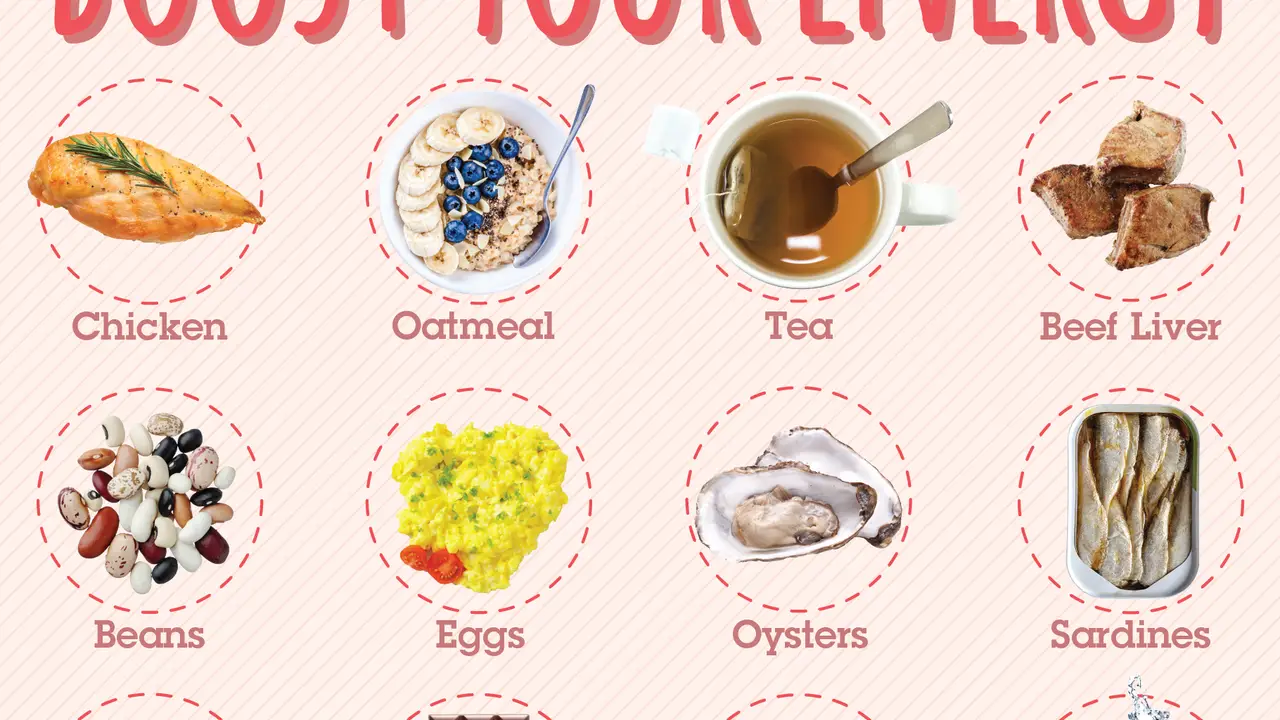5 Simple Stretches to Relieve Back Pain
Meta Description: Quitting smoking is one of the best things you can do for your health. Discover effective strategies for quitting smoking and overcoming nicotine addiction. Reclaim your health and live a longer, healthier life.

Understanding Nicotine Addiction and Smoking Cessation
So, you've decided to quit smoking? Congratulations! That's a huge step towards a healthier, happier you. But let's be real, it's not going to be a walk in the park. Nicotine addiction is a powerful force, and understanding it is the first key to unlocking a smoke-free future. Nicotine acts on receptors in your brain, releasing dopamine and other neurotransmitters that create feelings of pleasure and reward. Over time, your brain gets used to these effects, and you need more and more nicotine to achieve the same level of satisfaction. When you try to quit, your brain rebels, leading to withdrawal symptoms like cravings, irritability, anxiety, and difficulty concentrating. Recognizing these symptoms as signs of your body adjusting is vital to staying on track.
Beyond the physical addiction, there's also the psychological and behavioral component. Smoking is often linked to certain routines, situations, or emotions. Maybe you light up after a meal, during your commute, or when you're feeling stressed. Breaking these associations is just as important as dealing with the physical cravings.
Effective Nicotine Replacement Therapy (NRT) Options for Quitting
Nicotine Replacement Therapy (NRT) is a cornerstone of successful smoking cessation. It works by providing a controlled dose of nicotine without the harmful chemicals found in cigarettes. This helps to reduce withdrawal symptoms and make cravings more manageable, giving you a better chance of breaking the addiction. Several NRT options are available, each with its own advantages and disadvantages. Let's take a look at some of the most popular ones:
- Nicotine Patches: These are applied to the skin and deliver a steady dose of nicotine throughout the day. They're convenient and require minimal effort, but they can sometimes cause skin irritation. Brands like NicoDerm CQ and Habitrol are well-known. A 14-patch supply can cost around $30-$50.
- Nicotine Gum: This allows you to control the dose of nicotine you receive, making it helpful for managing sudden cravings. It requires chewing correctly to release the nicotine, and some people find the taste unpleasant. Brands like Nicorette and Equate offer nicotine gum. A pack of 100 pieces typically sells for $40-$60.
- Nicotine Lozenges: Similar to gum, lozenges dissolve in your mouth and release nicotine. They're discreet and can be used in situations where chewing gum isn't appropriate. Actively dissolving the lozenge will help manage intense cravings. Nicorette and Commit are common brands. Expect to pay around $40-$60 for a supply of 100 lozenges.
- Nicotine Inhalers: These deliver nicotine vapor directly to the lungs, mimicking the sensation of smoking. They can be helpful for people who miss the hand-to-mouth action of smoking. A starter kit can cost around $50-$70, with refills available for around $30.
- Nicotine Nasal Spray: This delivers a quick burst of nicotine to the nasal passages. It's the fastest-acting NRT option but can cause nasal irritation. It is available by prescription.
NRT Comparison:
The best NRT for you depends on your individual preferences and smoking habits. If you're a heavy smoker who needs a consistent dose of nicotine, the patch might be a good choice. If you experience frequent cravings, gum or lozenges might be more effective. The inhaler can help with the physical act of smoking, while the nasal spray provides the quickest relief. Talk to your doctor or pharmacist to determine which NRT option is right for you.
Using NRT Effectively:
It's crucial to use NRT as directed to maximize its effectiveness. Don't try to smoke while using NRT, as this can lead to nicotine overdose. Start with the recommended dose and gradually reduce it over time as your cravings subside. Don't be afraid to experiment with different NRT options to find the one that works best for you. And remember, NRT is just one tool in your quitting arsenal. It's most effective when combined with other strategies like behavioral therapy and support groups.
Prescription Medications for Smoking Cessation: Bupropion and Varenicline
Beyond NRT, there are also prescription medications that can help you quit smoking. Two of the most commonly prescribed options are Bupropion (Zyban) and Varenicline (Chantix). These medications work differently than NRT and require a prescription from your doctor.
- Bupropion (Zyban): This antidepressant medication helps to reduce cravings and withdrawal symptoms by affecting neurotransmitters in the brain. It doesn't contain nicotine and is typically started a week or two before your quit date. A month's supply can cost around $100-$200.
- Varenicline (Chantix): This medication works by partially stimulating nicotine receptors in the brain, reducing cravings and withdrawal symptoms, and blocking the pleasurable effects of nicotine if you do smoke. It's considered one of the most effective smoking cessation medications. A month's supply can cost around $150-$300.
Medication Comparison:
Both Bupropion and Varenicline have been shown to be effective in helping people quit smoking. However, they also have potential side effects. Bupropion can cause insomnia, dry mouth, and anxiety, while Varenicline can cause nausea, headache, and sleep disturbances. It's essential to discuss the potential risks and benefits of each medication with your doctor before starting treatment. They can help you determine which medication is right for you based on your medical history and smoking habits.
Important Note: Varenicline (Chantix) was previously associated with an increased risk of psychiatric side effects, such as depression and suicidal thoughts. However, recent studies have shown that these risks are lower than previously thought. If you have a history of mental health problems, it's essential to discuss this with your doctor before taking Varenicline.
Behavioral Therapies and Counseling for Quitting Smoking
Quitting smoking isn't just about overcoming the physical addiction to nicotine. It's also about changing your behavior and mindset. Behavioral therapies and counseling can provide you with the support and skills you need to break free from smoking habits and develop healthy coping mechanisms.
- Cognitive Behavioral Therapy (CBT): CBT helps you identify and change negative thought patterns and behaviors that contribute to smoking. You'll learn to recognize triggers, develop coping strategies, and manage cravings.
- Motivational Interviewing (MI): MI helps you explore your reasons for wanting to quit smoking and build your motivation to change. It's a collaborative approach that empowers you to take control of your own health.
- Group Counseling: Group counseling provides a supportive environment where you can connect with other people who are trying to quit smoking. You can share your experiences, learn from others, and receive encouragement.
- Individual Counseling: Individual counseling offers personalized support and guidance from a trained therapist. You can work on your specific challenges and develop a tailored quitting plan.
Finding Behavioral Therapy and Counseling:
Your doctor can refer you to a therapist or counselor who specializes in smoking cessation. You can also find resources online through organizations like the American Lung Association and the National Cancer Institute. Many employers and insurance companies offer employee assistance programs (EAPs) that provide access to counseling services.
Lifestyle Changes and Home Remedies to Support Smoking Cessation
In addition to NRT and behavioral therapies, there are several lifestyle changes and home remedies that can support your smoking cessation efforts. These strategies can help you manage cravings, reduce stress, and improve your overall health.
- Stay Hydrated: Drinking plenty of water can help flush nicotine from your system and reduce cravings.
- Eat Healthy: A balanced diet can help stabilize your blood sugar levels and reduce cravings. Focus on fruits, vegetables, and whole grains.
- Exercise Regularly: Exercise can help reduce stress, improve your mood, and distract you from cravings. Even a short walk can make a difference.
- Practice Relaxation Techniques: Deep breathing exercises, meditation, and yoga can help reduce stress and anxiety.
- Avoid Triggers: Identify situations or places that trigger your cravings and try to avoid them. If you usually smoke after a meal, try brushing your teeth or going for a walk instead.
- Find Distractions: When you feel a craving coming on, try distracting yourself with an activity you enjoy, such as reading, listening to music, or spending time with friends.
- Use Cinnamon Sticks: Some people find that chewing on cinnamon sticks can help mimic the hand-to-mouth action of smoking and reduce cravings.
- Ginger: Chewing on small pieces of ginger can help relieve nausea, a common withdrawal symptom.
Dealing with Withdrawal Symptoms and Common Challenges
Withdrawal symptoms are a common and unavoidable part of quitting smoking. They can be unpleasant, but they're temporary and will eventually subside. Understanding what to expect and having strategies for managing these symptoms can help you stay on track.
Common Withdrawal Symptoms:
- Cravings: These are intense urges to smoke. They can be triggered by specific situations, emotions, or even just the thought of smoking.
- Irritability: You may feel easily frustrated, angry, or restless.
- Anxiety: You may experience feelings of worry, nervousness, or panic.
- Difficulty Concentrating: You may have trouble focusing or remembering things.
- Sleep Disturbances: You may have trouble falling asleep or staying asleep.
- Increased Appetite: You may feel hungrier than usual and gain weight.
- Headaches: You may experience mild to moderate headaches.
- Cough: Your cough may worsen as your lungs start to clear out the toxins from smoking.
Strategies for Managing Withdrawal Symptoms:
- Use NRT or Prescription Medications: These can help reduce the severity of withdrawal symptoms.
- Stay Hydrated: Drinking plenty of water can help flush toxins from your system and reduce headaches.
- Eat Healthy: A balanced diet can help stabilize your blood sugar levels and reduce cravings.
- Exercise Regularly: Exercise can help reduce stress, improve your mood, and distract you from cravings.
- Practice Relaxation Techniques: Deep breathing exercises, meditation, and yoga can help reduce stress and anxiety.
- Get Enough Sleep: Aim for 7-8 hours of sleep per night to help your body recover.
- Avoid Triggers: Identify situations or places that trigger your cravings and try to avoid them.
- Seek Support: Talk to your doctor, therapist, or support group for encouragement and guidance.
Staying Motivated and Preventing Relapse
Quitting smoking is a journey, not a destination. There will be times when you feel tempted to relapse. Staying motivated and having strategies for preventing relapse are crucial for long-term success.
Tips for Staying Motivated:
- Remember Your Reasons for Quitting: Write down your reasons for quitting and review them regularly. Think about the health benefits, the financial savings, and the positive impact on your relationships.
- Set Realistic Goals: Start with small, achievable goals and gradually work your way up. Celebrate your successes along the way.
- Reward Yourself: When you reach a milestone, reward yourself with something you enjoy. This could be a small treat, a new book, or a weekend getaway.
- Visualize Success: Imagine yourself living a smoke-free life. Visualize the positive changes in your health, your appearance, and your relationships.
- Surround Yourself with Support: Connect with family, friends, or support groups who can encourage you and hold you accountable.
Strategies for Preventing Relapse:
- Identify Your Triggers: Recognize the situations, emotions, or places that trigger your cravings and develop strategies for coping with them.
- Avoid Temptation: Stay away from places where people are smoking and avoid spending time with smokers.
- Practice Refusal Skills: Learn how to say no to cigarettes when offered.
- Have a Plan for Coping with Stress: Develop healthy coping mechanisms for managing stress, such as exercise, relaxation techniques, or spending time with loved ones.
- Don't Be Afraid to Ask for Help: If you're struggling to stay on track, reach out to your doctor, therapist, or support group for guidance.
- Learn from Relapses: If you do relapse, don't give up. Analyze what went wrong and learn from your mistakes. Get back on track as soon as possible.
Recommended Products to Aid Your Smoking Cessation Journey
Here are some specific products that can assist you in your journey to quit smoking. Remember to consult with your healthcare provider before starting any new treatment.
- Nicorette Coated Nicotine Gum (4mg): Product Description: This gum provides a controlled dose of nicotine to help manage cravings. The coated variety offers a more palatable taste. Use Case: Use whenever you feel a craving coming on. Chew slowly until you feel a tingling sensation, then "park" the gum between your cheek and gum. Repeat as needed. Comparison: Compared to the patch, gum allows for on-demand nicotine delivery. Price: Around $40-$60 for 100 pieces.
- NicoDerm CQ Nicotine Patch (Step 1, 21mg): Product Description: A transdermal patch that delivers a continuous dose of nicotine over 24 hours. Use Case: Start with the highest dose and gradually reduce it over several weeks. Apply to a clean, dry, hairless area of skin. Comparison: Offers a steady nicotine level throughout the day, unlike gum or lozenges. Price: Around $30-$50 for a 14-patch supply.
- Commit Nicotine Lozenges (4mg): Product Description: Dissolves slowly in your mouth, releasing nicotine to help curb cravings. Use Case: Place a lozenge in your mouth and let it dissolve slowly. Avoid chewing or swallowing it. Comparison: Discreet and easy to use in situations where chewing gum isn't appropriate. Price: Around $40-$60 for 100 lozenges.
- QuitSure App: Product Description: A digital program combining CBT, mindfulness, and personalized coaching to help you quit smoking. Use Case: Download the app and follow the guided program. Connect with a coach for personalized support. Comparison: Offers a comprehensive approach to quitting, addressing both physical and psychological aspects. Price: Varies depending on the subscription plan.
- "Allen Carr's Easy Way to Stop Smoking" Book: Product Description: A popular book that challenges your beliefs about smoking and helps you break free from the addiction. Use Case: Read the book and follow the instructions. It's designed to change your mindset about smoking. Comparison: Focuses on the psychological aspects of addiction. Price: Around $10-$20.
Quitting smoking is a challenging but rewarding process. By understanding nicotine addiction, utilizing effective strategies, and staying motivated, you can break free from smoking and live a healthier, happier life. Remember to consult with your healthcare provider for personalized guidance and support. You've got this!
:max_bytes(150000):strip_icc()/277019-baked-pork-chops-with-cream-of-mushroom-soup-DDMFS-beauty-4x3-BG-7505-5762b731cf30447d9cbbbbbf387beafa.jpg)






